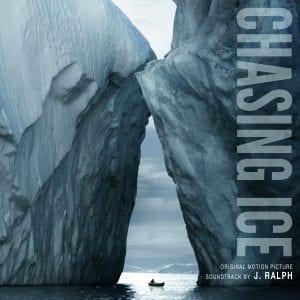Film Review: Chasing Ice
The 22nd annual St. Louis International Film Festival, which ran from November 14-24, offered the typical variety of independent films. I appreciated the chance to review a few of the movies featuring environmental issues.
 Chasing Ice was a riveting documentary about the melting glaciers in the great Arctic Circle. James Balog, a photographer for National Geographic magazine, got his first opportunity to capture the beauty of light shining through the majestic glaciers of Greenland while doing a story called The Big Thaw. During this project, he observed a glacier move 1,500 feet in an hour, and became intrigued if not obsessed with the implications. A climate skeptic for 20 years, he decided to explore for himself how much truth there was to the “science.”
Chasing Ice was a riveting documentary about the melting glaciers in the great Arctic Circle. James Balog, a photographer for National Geographic magazine, got his first opportunity to capture the beauty of light shining through the majestic glaciers of Greenland while doing a story called The Big Thaw. During this project, he observed a glacier move 1,500 feet in an hour, and became intrigued if not obsessed with the implications. A climate skeptic for 20 years, he decided to explore for himself how much truth there was to the “science.”
Certainly insurance statistics have made believers beyond those who’ve studied the science. But Balog embarked on a most unusual undertaking – to place cameras in remote areas, and automatically photograph select glaciers on at least an hourly basis in Greenland, the Yukon, Alaska and Montana. The challenge of developing this automation in what became the Extreme Ice Survey was nearly as difficult as installing the cameras in the harshest of environments. Balog and his team experienced the frustration of many failures before perfecting a design that provided them with the evidence they were looking for.
After three years, they had enough data to provide a stunning pictorial story of what’s happening to our glaciers. “We’re in the midst of a geological change, and we humans can see it,” Balog said. The 30 cameras showed dramatic shifts, including a 2.5 mile retreat in three years for one glacier. “If I hadn’t seen it in the pictures, I wouldn’t have believed it at all.”
The Arctic glaciers store an incredible amount of water in the ice, and are simply enormous in their size. Glaciers in the Himalayas, for example provide water to 1.5 billion people. A section of glacier the size of Manhattan crumbled into the Arctic ocean in a matter of 75 minutes. This “calving” is a site to see, and Balog’s team caught the entire event on video during one of their expeditions. Of the 1,400 glaciers in the Yukon, four actually got bigger, while 300 disappeared and the rest got smaller.
Now convinced of the reality of climate change, Balog describes what’s happening in the Arctic as the “canary in the coal mine” for the rest of the world. If this movie doesn’t make a believer out of you, I’m at a loss to know what would. What will you say to your grandchildren when they ask “Why didn’t you do something?” For James Balog, “I did what I could.”
This was published in the Going Green section of the January 2014 issue of Spirit Seeker magazine.
